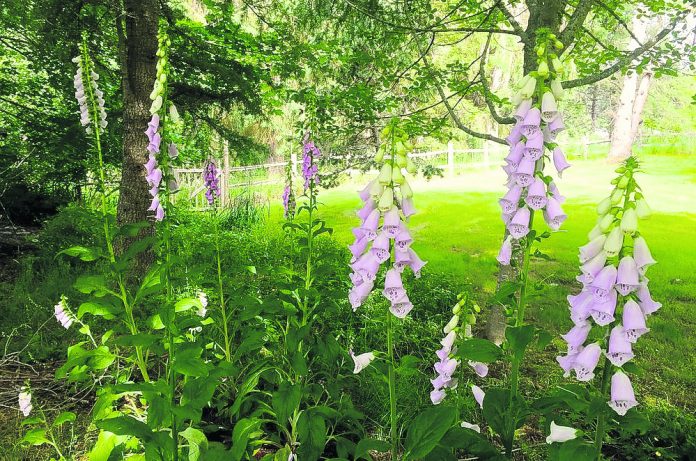“Re-wilding” is the trend toward diversifying traditional lawns by putting in native plants that flower and fruit, boosting wildlife populations. It returns more control of the home landscape to nature.
But such conservation landscaping involves more than simply quitting pruning or letting properties go to seed.
“More often than not, that would result in a yard dominated by European turf grasses and invasive species,” said Dan Jaffe, horticulturist and propagator for the Norcross Wildlife Sanctuary in Wales, Massachusetts.
“With good planning and establishment of a well-built landscape, it will mature into a space that can be easily cultivated with lazier gardening,” Jaffe said. “When it comes right down to it, naturalistic landscapes can be very low-maintenance.”
Find plants that are suited to your growing conditions and also to your goals for the site, Jaffe said.
“The great thing about working with native plants is that these are plants that will grow in any conditions you can think of,” he said. “There is no need to bring in problem plants when there are so many other options.”
Weigh the risks against the rewards. Blackberries and thistles, for example, are popular with pollinators but painful to handle and difficult to contain.
“Instead, work with wild strawberries or flowering raspberries (no thorns on those) or bee balm or meadowsweet, or one of the hundreds of other options,” Jaffe said.
Re-wilding also means relaxing maintenance standards. Don’t rush to clean up the garden at the end of the growing season. Seeds are food to wildlife, and lifeless hollow stems are shelter.
“Birds who eat seeds appreciate it when you don’t deadhead flowers,” said Theresa Badurek, a horticulture agent with the University of Florida Institute of Food and Agricultural Sciences. “Less frequent mowing allows pollinators to visit flowers before you mow. Less raking leaves provides habitat for beneficial insects.”
No area is too small. “Every space we can provide for nature to blossom is valuable,” Badurek said. “Re-wilding containers can be helpful, especially if you need to add more flowers to the garden.”
Talk with your neighbors and check local ordinances before going ahead. Your project can be a positive influence on others, but let them know “the early stages of the work can look like a mess,” Jaffe said. “Converting a lawn into a meadow will look great in three years and fantastic in six, but the first year can be tough going.
“Without an explanation, neighbors could very well interpret your work as simple laziness instead of habitat construction,” he said.
Herbicides should be a last resort only, Jaffe said.
“Chemicals are a tool in the toolbox, and there are some situations where invasive species have taken such a foothold that the use of herbicides can mean the difference between a project being accomplished or failing,” he said.
People are beginning to realize that healthy landscapes with improved air and water quality benefit humans as much as they do wildlife, Jaffe said.
“Some folks are looking for lower maintenance landscapes and find that going wild is a good choice,” he said. “Other people are concerned about the changing climate and habitat loss. Still others look toward conservation as something anyone can do instead of being restricted to the untouched portions of the country and only accomplished by professional conservationists.”




















